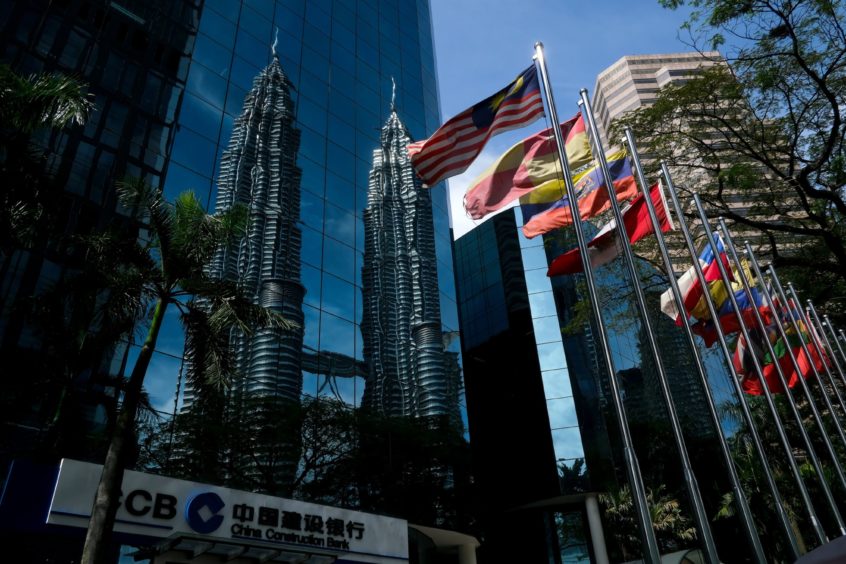
Petronas, which has yet to make a firm carbon-neutral pledge, sees significant growth ahead for solar and wind, particularly as a hedge against volatile fossil fuel prices, Jay Mariyappan, head of the state-backed Malaysian company’s new energy business told the APAC power and renewables summit.
Last November, Petronas announced its “aspiration” to achieve net zero carbon emissions by 2050, but the company, which is one of the world’s top liquefied natural gas (LNG) suppliers, has yet to make a concrete commitment.
Even though Petronas believes that oil, and especially natural gas, which is a cleaner burning fossil fuel, will still be relevant in the future, the company understands it must venture into renewable energy now, or it risks becoming less relevant going forward, as the world increasingly demands cleaner energy.
Its New Energy business, formed in 2018, is a hedge against an uncertain future. It marks part of Petronas’ pivot to cleaner fuels, as it reshapes its portfolio for the energy transition, while also helping protect Petronas from fossil fuel price volatility, Mariyappan told the Wood Mackenzie summit on Thursday.
The risk-reward proposition for renewable energy is very different to integrated oil and gas projects, noted Mariyappan. Returns from fossil fuels maybe less secure in the future, given volatile pricing. Conversely, renewable energy projects, which necessitate high capital spending upfront and short construction times, offer a stable revenue stream, which is very different to oil and gas, added Mariyappan.
In March, Petronas reported that it will almost double its yearly capital investment spend on new energy initiatives this year as it eyes a slow measured diversification away from its traditional oil and gas business.
Solar and wind are a major focus for Petronas, along with flexible generation and storage that addresses the intermittency issues of renewable energy, said Mariyappan. ‘Flexible generation’ appears to be a reference to natural gas. In 2019, Petronas set up a Gas & New Energy division.
Challenges for renewables in Malaysia
The solar resource in Malaysia is fine, but the wind resource is not so good, said Mariyappan. As a result, Petronas is concentrating on low-speed wind technology and has started a demonstration project at an oil platform offshore Sarawak.
Petronas has also focused its attention on distributed solar in Malaysia, providing solutions for fabrication yards and retail store chains.
However, another key challenge for renewables in Malaysia remains access to transmission and distributions networks, which is proving difficult, added Mariyappan.
Hydrogen
Hydrogen will also play a very significant role in the regional energy transition puzzle, said Mariyappan.
Petronas is already producing blue hydrogen as a by-product from its facilities and will be exploring the commercial production of green hydrogen in the near future. Coupled with its proximity to Asian markets, expanding renewables portfolio, strong partnerships with customers and continued focus on research and development of electrolyser technology, the company claims it is well-poised to be a competitive low-carbon and green hydrogen solutions provider.
In February, Petronas and JERA – a joint fuel-procurement venture between Japan’s Tokyo Electric Power and Chubu Electric Power – signed a memorandum of understanding that will see the pair collaborate on a wide range of low-carbon energy initiatives, covering liquefied natural gas (LNG), ammonia and hydrogen.
In March, Abu Dhabi-based Masdar and Petronas said they will work together to pursue renewable energy and green hydrogen projects across Asia and the Middle East.
Carbon capture and storage
Petronas is also deploying carbon capture and storage (CCS) technology at its Kasawari development with first injection planned in 2025. This is part of a greater strategic plan for CCS across depleted gas fields in Malaysia with a total 46 trillion cubic feet of storage volume identified. There is even bigger potential to expand this volume if aquifers and depleted oil fields are considered.
Meanwhile, Mariyappan told the summit that Petronas is making a concerted effort to decarbonise across its businesses from upstream to downstream by using innovative digital technologies and electrifying processes with renewable energy where possible.
Recommended for you

